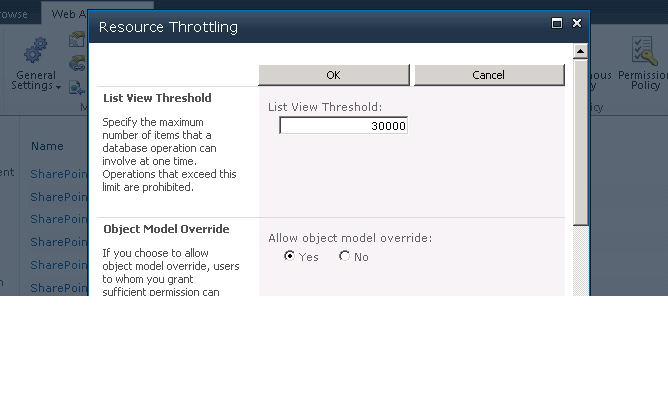It is not recommended to change this value. It may consume more server resources and it increases the risk of getting deadlocks in your environment when users are accessing lists and libraries etc.
To minimize database contention, SQL Server often uses row-level
locking as a strategy to ensure accurate updates without adversely
impacting other users who are accessing other rows.
However, if a read
or write database operation, such as a query, causes more than 5,000
rows to be locked at once, then it's more efficient for SQL Server to
temporarily escalate the lock to the entire table until the database
operation is completed. Note that the actual number is not always
5,000, and can vary depending on your site, the amount of activity in
the database, and your site's configuration.
When this lock escalation
occurs, it prevents other users from accessing the table. If this
happens too often, then users will experience a degradation of system
performance. Therefore, thresholds and limits are essential to help
minimize the impact of resource-intensive database operations and
balance the needs of all users.
That's how SQL is designed. Instead of changing the value, i would look at the topic Ways to manage lists and libraries with many items in the same article below.
If you really need to let users access large unfiltered lists to do some tasks, i would recommend to set up a daily window where users can perform their tasks.
The daily time window is a way for farm administrators to specify a
dedicated time period for all users to do unlimited operations during
off-peak hours, such as 6:00 PM to 10:00 PM.
Although views are a primary way to retrieve items from a list or
library, other SharePoint commands and operations also require
accessing the items in a list or library, such as: adding and deleting
an index, adding and modifying a list column, deleting and copying
folders, changing security settings for a list or library, saving a
list with its content as a template, deleting a web or site, and
restoring or deleting items from the Recycle Bin. These commands and
operation could also fail if they exceed the site thresholds and
limits when retrieving list data.
Manage lists and libraries with many items


